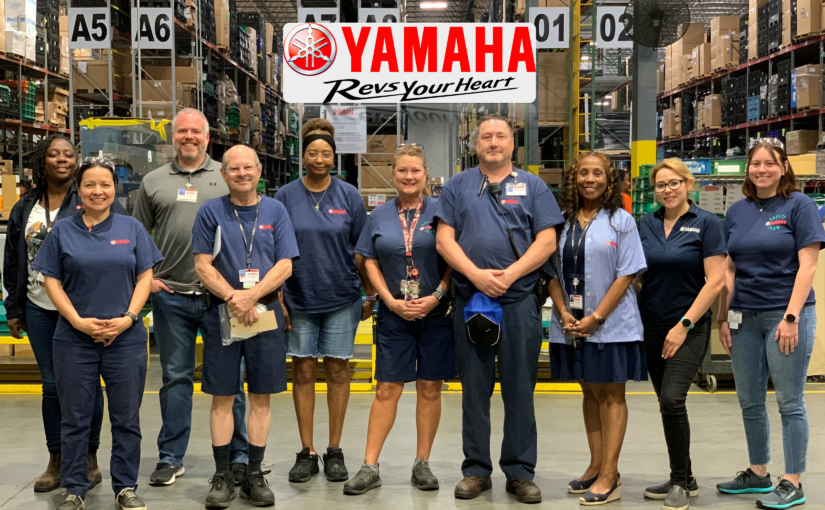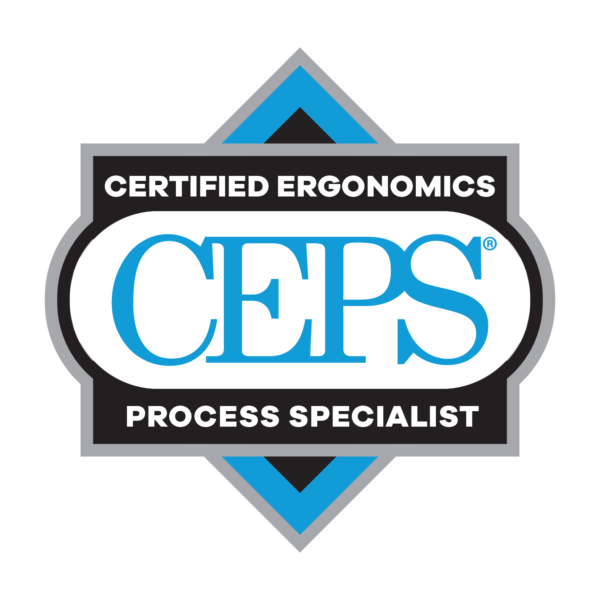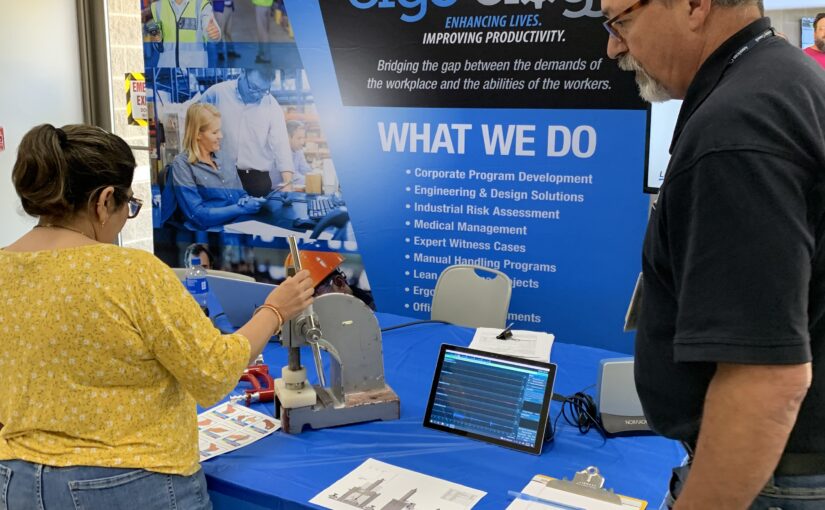
A medical device manufacturer dramatically reduced its OSHA-recordable injuries while improving product quality, achieving a hefty cost-avoidance, lowering production costs, and enhancing employee safety by introducing a remote ergonomics program at its medical device manufacturing facility from 2018 to 2019 (24 months).
The facility’s 340 employees manufacture molded silicone medical devices for use in internal drainage systems for catheters, balloons and breast implants at the facility located in Southwest Ohio.
For years, the facility had been experiencing increasing rates of repetitive motion injuries—reaching, lifting, a wide range of painful complaints generally involving the arm from the wrist to the shoulder.
“The number of medical complaints had been trending up for three or four years, but they spiked in 2018,” says the facility, Safety, Environmental and Security Manager.
When internal efforts failed to lower the injury rate, the company’s Corporate Health and Safety program Director, turned to Ergo-ology, an ergonomics consulting firm in the Atlanta suburb of Norcross, Ga. “I reached out to Ergo-ology in September 2018,” he says. “One of our facilities was experiencing a high number of ergonomic-related injuries. We had tried ergonomic-assessment tools and realized they helped with some of the hazards, but they seemed to be missing in other areas.”
On his first visit to the plant, Brock Anderson, CPE, LSSBB, CSCS, Ergo-ology’s Founder and Principal Consultant, discovered that the facility had the highest injury count and the greatest number of employee days missed of all the companies 75 American sites. Anderson’s first order of business was to conduct a discovery analysis to determine why injury rates were so high.
“The point of a discovery analysis is to probe the company’s ergonomics and production goals,” Anderson says. “We look into what resources they have, what constraints they’re facing, what efforts have taken place in previous years and so forth. Based on our findings, we create an ergo program that encompasses nine components, including employee awareness, risk evaluations, medical management, proactive and reactive approaches to risk-control, management’s engagement and the overall results. Taken together, the results form a Gap Analysis (a comparison of actual performance with desired performance) or a SWOT analysis (an examination of strengths, weaknesses, opportunities, threats).”
Working within a modest budget, Anderson and the facility’s Safety Manager deployed an Ergo Leadership Program consisting of a core team of 14 employees representing various disciplines charged with improving the ergonomic opportunities and being lead representatives for other employees at their facility.
The team consisted of front-line employees, production leads, quality engineers, product-development engineers, process engineers and the safety manager as the team lead. Short bi-weekly meetings enabled the team to devote time to identifying ergonomics issues without interrupting their daily tasks. The team fanned out across the entire business sector. A team member was assigned to each of the facility’s five clean rooms.
“We were looking for jobs that were deemed hazardous—tasks requiring repetitive motions, lifting, working with their arms in an awkward position, twisting the elbow out like a chicken wing,” the Safety Manager says. “We listed each job based on the number of risk factors and then recorded them on an ergo tracker spreadsheet. We prioritized the risk factors in order of the greatest risk of injury. Those were the jobs we focused on first.”
Anderson and the Safety Manager were very selective in appointing people to the core team. “We didn’t choose the people who were the most authoritative,” he says, “we chose those who were the most influential. When they went back to their departments to effect ergonomic change, they were going to need people who would listen to them and engage with them.”
Their bi-weekly core team meetings were supplemented by monthly Skype meetings where Anderson would present an ergonomic topic germane to the facility’s goals and assign an exercise related to the topic. The team would present its exercise solutions at the next monthly Skype meeting and log them as best practices on the ergo tracker spreadsheet.
To complement the list of best practices, the core team employed more basic organizational changes: retooling, re-engineering or redesigning the machinery used in the manufacturing process. In high-risk jobs where the team could not implement a quick ergo solution, they would mitigate the risk factor by rotating workers in and out at three-hour intervals.
By the middle of 2019, six months into the project, the company’s Executive Leadership began to see solid gains in reducing injuries and recapturing days previously lost to injury. As a result, it encouraged the core team to devote more time to the ergonomic initiative. “Leadership realized the ergonomics program was a value-added initiative that supported the overall goals of the facility,” the Safety Manager says. “Take quality, for example. Quality, as you can imagine, is very important in the medical-device world. We discovered that quality improvement was one of the added benefits of ergonomics. And so, we began to emphasize the value of improved quality in a business case for ergonomic improvements.”
Quality improvements at the facility took the form of an increase in zero-defect products, a decrease in scrap, fewer instances of rework, and improved cost performance. “We prepared a business case model showing how we were able to be more profitable, while incurring less risk and producing higher-quality medical parts by implementing our targeted ergonomics program,” he says.
More specifically, the facility realized $1.3 million in cost-avoidance and reduced the risk of injury by 30 to 40 percent over an 18-month period, the Safety Manager says. What’s more, productivity in one area improved by 46 percent, and the rate of rejected parts decreased by more than 30 percent.
Underlying the numbers is a plant-wide culture change in the manufacturing process at the facility. “The company is built around a lot of people who have a lot of seniority,” he says. “Been here a long time, never been exposed to any kind of safety-hazard awareness. So, the common attitude was, well, we’ve been doing it that way for 30 years and nobody’s ever gotten hurt—until now. Well, one injury in 20 years is one injury too many.”
Starting small, Anderson encouraged the core team to initially focus on what is called “quick wins.” “What can we fix to show change for just a couple of hundred dollars and get mindsets to change at the same time?” the Safety Manager asks. “The core team took a floor-up approach. We went after the easy wins, the quick wins, the low-hanging fruit. We adapted a ‘just do it’ kind of attitude and implemented quick changes that, over time, turned the culture around. A year ago, ergonomics was never talked about here. Not once. Now, it’s brought up several times a day by several people. In the course of a year, we’ve got everybody talking ergonomics.”
“I’m very pleased with the progress they’ve made at their facility,” says the Corporate Health and Safety Program Director. Remember, it was the Corporate Director who brought in Ergo-ology to implement an effective ergonomics program at the facility originally. The Corporate Director’s overarching responsibility involves managing the health and safety of 19,000 company’s employees worldwide.
“I’ve seen improvements in some of the tools they’re using, improvements in safety, in culture. People are very proud of their accomplishments. People on the floor come to their representatives in the area and talk to them about ergonomic efforts. The representatives (the core team) can look at a workstation, assess the manufacturing process and identify the risks. Then the team resolves the risk on its own or with Ergo-ology’s assistance. This was the first time we looked at the use of ergonomics at the facility site. The results exceeded our expectations. The success of the program has drawn the interest of other company sites. In fact, we plan to roll out a similar remote support program across all our North American sites over the next 3 years.”
“It’s more than just safety,” the Safety Manager says. “It’s more than enhancing the bottom line or improving quality. The program is about employee engagement, employee morale. There’s an element of employee retention here because people feel like they’re part of something way bigger than themselves. It’s about employee attraction. People in the community hear about our ability to take care of our employees so it attracts more talent to the facility.
“We’re not just solving problems,” the Corporate Director adds, “we’re making employees feel better by making their jobs easier. We’ve enhanced employee engagement on the job and, by so doing, we’ve changed the entire production culture.”

Yamaha leaned into Ergo-ology’s ELP® (ergonomics leadership program) at the start of 2022 with hopes of engaging employees, developing a Read more

We are pleased to announce the United States of America has granted Ergo-ology permissions to certify in #ergonomics with the Read more

Employees complete tasks, many of which require physical labor, every day. These actions range from sitting in a chair to Read more